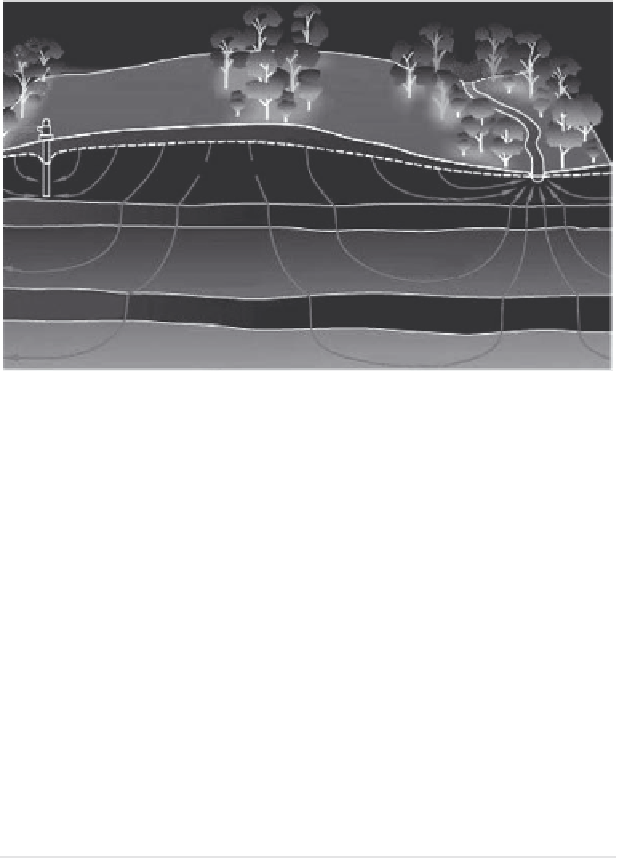Environmental Engineering Reference
In-Depth Information
Recharge area
Discharge area
Pumped well
Unconfined
aquifer
Confining bed
Confined
aquifer
Centuries
Confining bed
Confined
aquifer
Millennia
FIGURE 3.33
Range in groundwater residence time. (From Focazio, M.J. et al.,
Assessing Ground-Water Vulnerability to
Contamination: Providing Scientifically Defensible Information for Decision Makers
, United States Geological Survey
Circular 1224, Denver, CO, 2001.)
TABLE 3.4
Estimated Depth and Residence Time of the World's Water Supply
Parameter
Equivalent Depth (m)
Approximate Residence Time
Oceans and Seas
2,500
4,000 years
Lakes and Reservoirs
0.250
10 years
Swamps
0.007
1-10 years
River channels
0.003
2 weeks
Soil moisture
0.130
2 weeks to 1 year
Groundwater
120
2 weeks to 10,000 years
Ice caps and Glaciers
60
10-10,000 years
Atmospheric water
0.025
10 days
Biospheric water
0.001
1 week
Source:
Environment Canada, Aquifers and wells, http://www.ec.gc.ca/water/
images/nature/gedwtr/a5f3e.htm, 2009.
3.5.10 Groundwater Withdrawal
Withdrawal of groundwater is accomplished by pumping a well installed within the aqui-
fer. As groundwater is pumped from the aquifer, the water level in the aquifer begins to
decline as water is removed from storage. A hydraulic gradient is created as the water level
falls below the level of the surrounding aquifer. Water then begins to migrate from the
aquifer into the well. The water level will continue to decline within the aquifer, and the
flow rate of water into the well will increase until the inflow rate is equal to the withdrawal
rate. This process occurs only when the pumping rate does not exceed the capacity of the
aquifer formation to transmit groundwater to the well. In this case, the diameter of the
well may be too small, and the pump should be placed lower in the well, or the withdrawal
rate should be decreased.


Search WWH ::

Custom Search